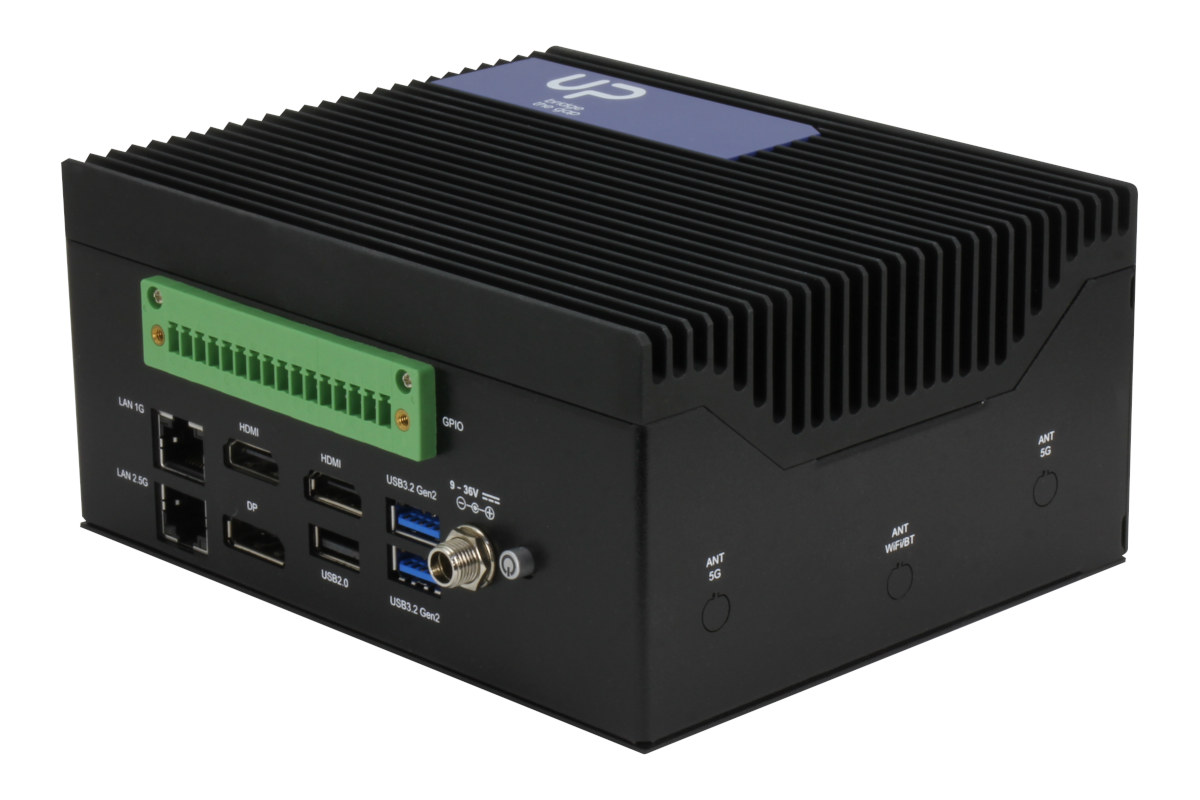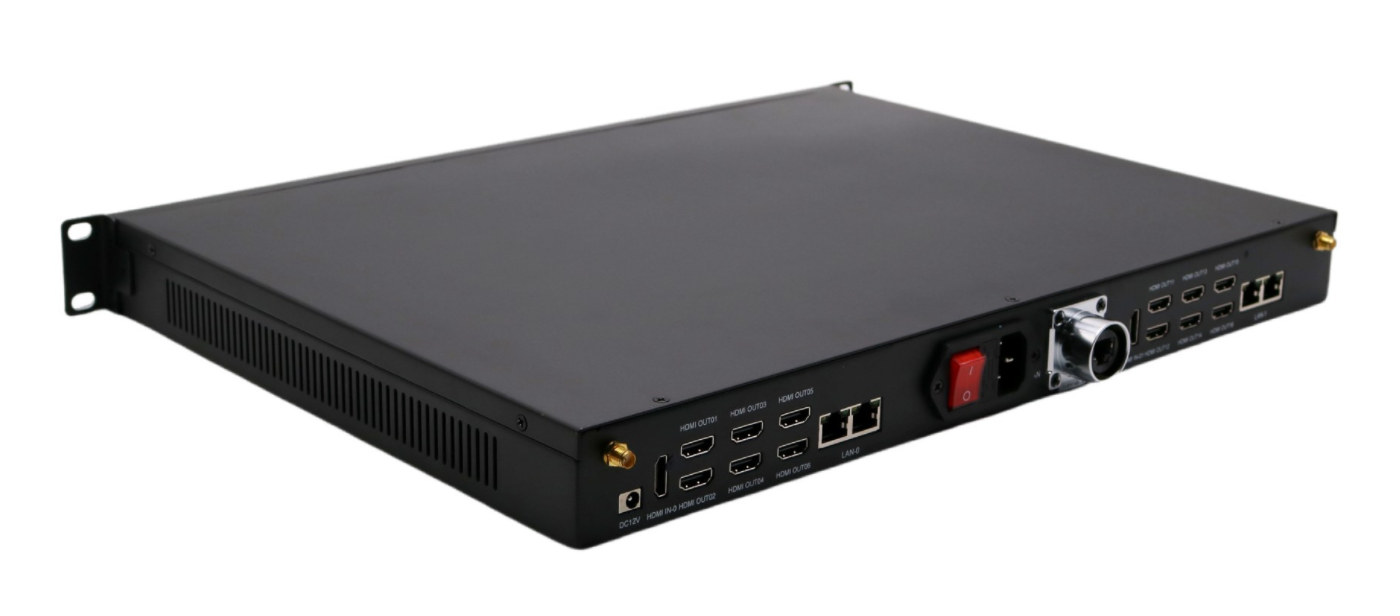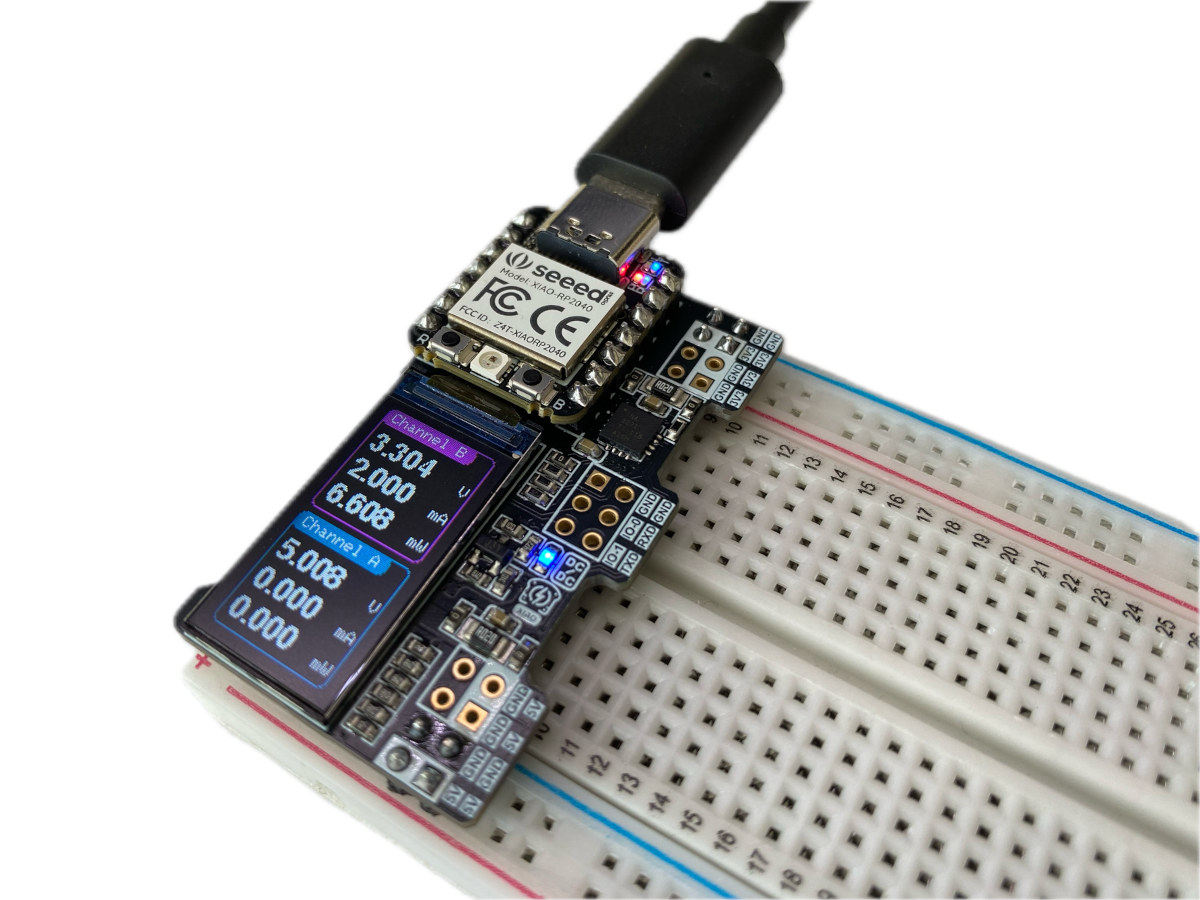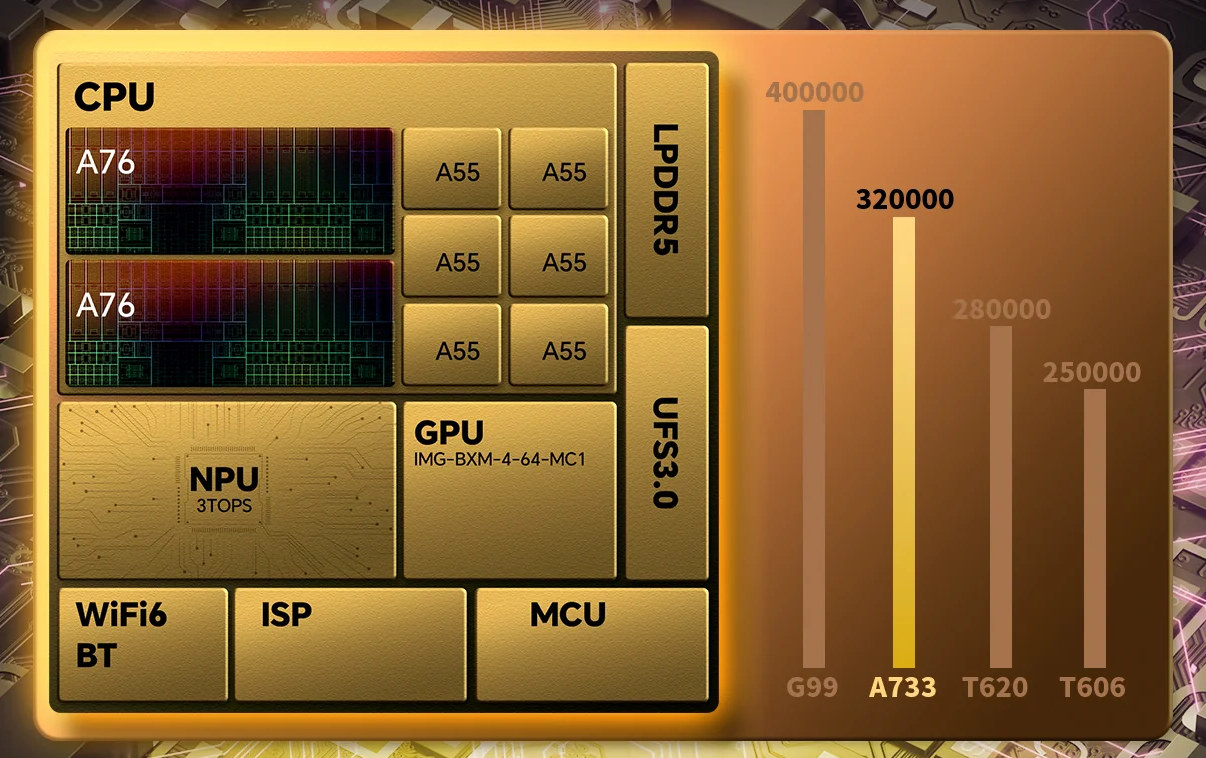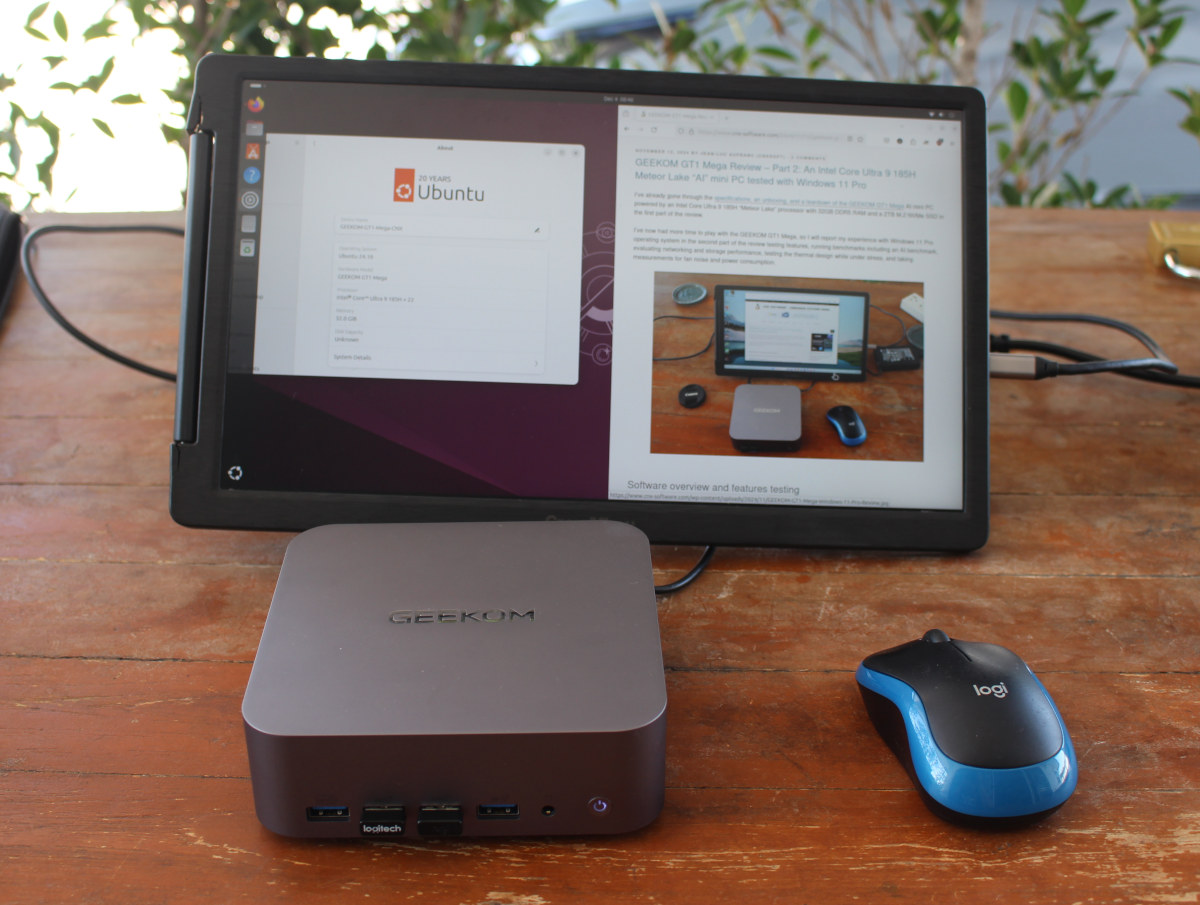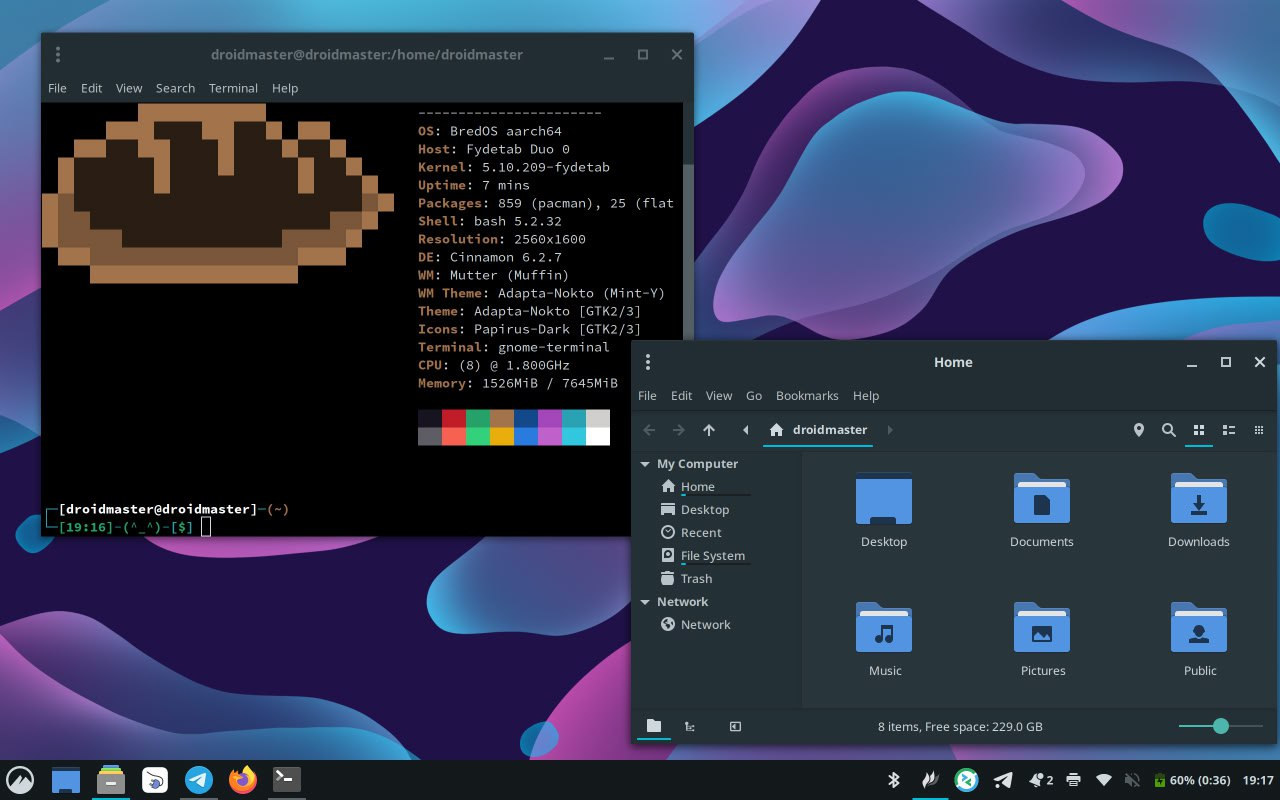UP Xtreme i14 Edge is an industrial fanless mini PC preloaded with an Ubuntu Pro-validated Ubuntu 24.04 Linux distribution and powered by an Intel Core Ultra 5/7 “Meteor Lake” SoC with up to 64GB LPDDR5. The device is based on the UP Xtreme i14 SBC we covered last June, and comes with M.2 PCIe sockets for NVMe SSD, a SATA port, 2.5GbE and GbE interfaces, support for WiFi and 4G LTE/5G wireless modules, four 8K capable video output ports (HDMI, DP, and USB-C), and three USB Type-A ports, but is housed in a fanless metal enclosure with two RS232/RS485 DB9 connectors and an externally-accessible terminal block for GPIO signals. UP Xtreme i14 Edge specifications: Meteor Lake-H/U SoC (one of the other) Intel Core Ultra 7 165H 16-core (6P+8E+2LPE) processor @ 1.4 / 5.0 GHz with 24MB cache, Intel 8Xe LPG graphics @ 2.3 GHz, Intel AI Boost NPU; TDP: […]
Mekotronics R58-HD-1U digital signage player supports 12 HDMI outputs, video walls using three Rockchip RK3588 SoCs
Mekotronics R58-HD-1U is a digital signage player with 12 independent HDMI outputs implemented through three Rockchip RK3588 SoCs, housed in a 1U standard chassis, and mostly designed for video walls and other applications where multiple displays are close to each other. Each Rockchip RK3588 processor is coupled with up to 16GB RAM and 128GB eMMC flash, and the system also offers two HDMI inputs, five Ethernet ports, WiFi 6 and Bluetooth, and seven USB ports for expansion. Mekotronics R58-HD-1U specifications: SoCs – 3x Rockchip RK3588 each with CPU – Octa-core processor with 4x Cortex-A76 cores @ up to 2.4 GHz, 4x Cortex-A55 cores @ up to 1.8 GHz GPU – Arm Mali-G610 GPU with OpenGL ES 3.2, OpenCL 2.2, and Vulkan 1.2 support VPU 8Kp60 video decoder for H.265/VP9 codecs 8Kp30 video decoder for H.264 codec 4Kp60 video decoder for AV1 codec Multi-channel decoder in parallel AI accelerator – 6 […]
XIAO Powerbread is a breadboard power supply and meter based on XIAO RP2040 or ESP32 USB-C board
The XIAO Powerbread is a breadboard power supply and meter compatible with XIAO RP2040 or ESP32 USB-C boards and equipped with a color LCD display showing real-time voltage, current, and power consumption for 5V and/or 3.3V power rails. Breadboard power supplies are nothing new. We’ve written about several over the years including the Toaster board with adjustable voltage from 5 to 16V, the SwitchTrick switching power supply board, and the MEGO portable breadboard power supply with a built-in battery. The XIAO Powerbread only supports 5V and 3.3V power rails, but its main selling point is its integrated breadboard power meter function. XIAO Powerbread specifications: Supported USB-C modules General purpose MCU – XIAO RP2040, XIAO RP2350 WiFi / Bluetooth MCU – XIAO ESP32S3, XIAO ESP32C3, XIAO ESP32C6 Display – 0.96-inch color TFT LCD with 160×80 resolution and ST7735S SPI controller Power monitoring – 2x TI INA3221 sensors connected over I2C […]
Allwinner A733 octa-core Cortex-A76/A55 AI SoC supports up to 16GB RAM for Android 15 tablets and laptops
Allwinner A733 is an octa-core Cortex-A76/A55 processor with an optional 3 TOPS NPU and support for up to 16GB RAM designed for Android 15 tablets and laptops such as the Teclast P50Ai with a 10.92-inch touchscreen display. With two Cortex-A76 cores, six Cortex-A75 cores, an Imagination BXM-4-64 MC1 GPU, and an NPU, the Allwinner A733 looks very similar to the Allwinner A736 we noted in a roadmap last year. But there’s no news about the A736, so maybe the name was dropped and the Allwinner A733 was launched instead. Allwinner A733 specifications: CPU Dual-core Arm Cortex-A76 @ up to 2.00 GHz Hexa-core Arm Cortex-A55 @ up to 1.79 GHz Single-core RISC-V E902 real-time core GPU – Imagination Technologies BXM-4-64 MC1 VPU 8Kp24 H.265/VP9/AVS2 decoding (no mention of AV1) 4Kp30 H.265/H.264 encoding AI accelerator – Optional 3 TOPS NPU Memory 192 KB SRAM + 512 KB shared SRAM 32-bit LPDDR4/LPDDR4x/LPDDR5 interface […]
GEEKOM GT1 Mega review with Ubuntu 24.10 – Part 3: Linux on an Intel Core Ultra 9 185H “Meteor Lake” mini PC
We’ve already had a look at GEEKOM GT1 Mega’s hardware with an unboxing and a teardown before following up with a thorough review of the Intel Core 9 Ultra 185H mini PC with Windows 11 Pro. After being interrupted by some Raspberry Pi reviews, I finally had the time to test the GEEKOM GT1 Mega with Ubuntu 24.10 to check out how well (or not) it works with a recent Linux distribution. I’ve tested the features of the Meteor Lake mini PC in Linux, ran some benchmarks, evaluated storage and network performance, played 4K and 8K videos on YouTube at various frame rates, went through a stress test to check its thermal design, and finally measured the mini PC’s fan noise and power consumption. Ubuntu 24.10 installation I would usually review mini PCs with the latest Ubuntu LTS version which would currently be Ubuntu 24.04.1. However, since the Intel Core […]
BredOS Arch Linux Arm distribution runs on Rockchip RK3588 single board computers
BredOS is a Linux distribution based on Arch Linux Arm and optimized to run on Rockchip RK3588/RK3588S single board computers (SBCs) with current support for 22 boards from Radxa, Orange Pi, Khadas, and others. Board vendors will usually provide OS images for their SBCs, but the quality and support may be limited, so projects like Armbian and DietPi are maintaining Ubuntu and/or Debian images for popular single board computers. But if you’re an Arch Linux (Arm) fan, there are fewer choices, and you may have to roll your own port for your board. BredOS provides an easy-to-use alternative based on Arch Arm Linux. BredOS highlights (provided by the developers): User-Friendly Interface – A simplified and intuitive user interface for easy navigation and use. Arch-Based – Built on top of Arch Linux, ensuring access to a vast repository of packages and a rolling release model. Arm Support – Optimized for Arm-based […]
Vulkan 1.4 3D graphics and compute API released
The Khronos Group has just announced the release of Vulkan 1.4 cross-platform 3D graphics and compute API. The new release makes some of the optional extensions and features mandatory, adds streaming transfers, and supports 8K rendering on up to eight targets. Minimum hardware limits have also been increased including at least seven maxBoundDescriptorSets and eight maxColorAttachments. Vulkan 1.4 highlights: Streaming Transfers: new implementation requirements to ensure applications can stream large quantities of data to a device while simultaneously rendering at full performance. Previously optional extensions and features critical to emerging high-performance applications are now mandatory in Vulkan 1.4, ensuring availability across multiple platforms. These include push descriptors, dynamic rendering local reads, and scalar block layouts. Maintenance extensions up to and including VK_KHR_maintenance6 are now part of the core Vulkan 1.4 specification. 8K rendering with up to eight separate render targets is now guaranteed to be supported, along with several other […]
Silicon Labs SiWG917Y and SiWN917Y are ultra-low power WiFi 6 and Bluetooth LE 5.4 IoT modules
Silicon Labs SiWG917Y and SiWN917Y are pre-certified, ultra-low power 2.4 GHz WiFi 6 and Bluetooth Low Energy (LE) 5.4 modules made as an extension of the Wireless Gecko Series 2 Arm Cortex-M33 microcontroller family and designed for IoT applications such as Smart Home devices, building automation solutions, healthcare devices, industrial sensors, and asset trackers. The SiWG917Y module is used as a standalone solution where all application code runs on an Arm Cortex-M4 core, and the SiWN917Y module is designed as a Network Co-processor so customers can execute their application on a separate MCU while the wireless module manages WiFi 6 and BLE 5.4. Silicon Labs SiWx917Y modules specifications: Microcontroller MCU Arm Cortex-M4F application core up to 180 MHz (225 DMIPS performance) Arm Cortex-M4 network wireless processor running up to 160 MHz, Accelerators – Integrated FPU, MPU, NVIC, Matrix vector processor (MVP) Memory 672 KB embedded SRAM shared by Cortex-M4 and […]


